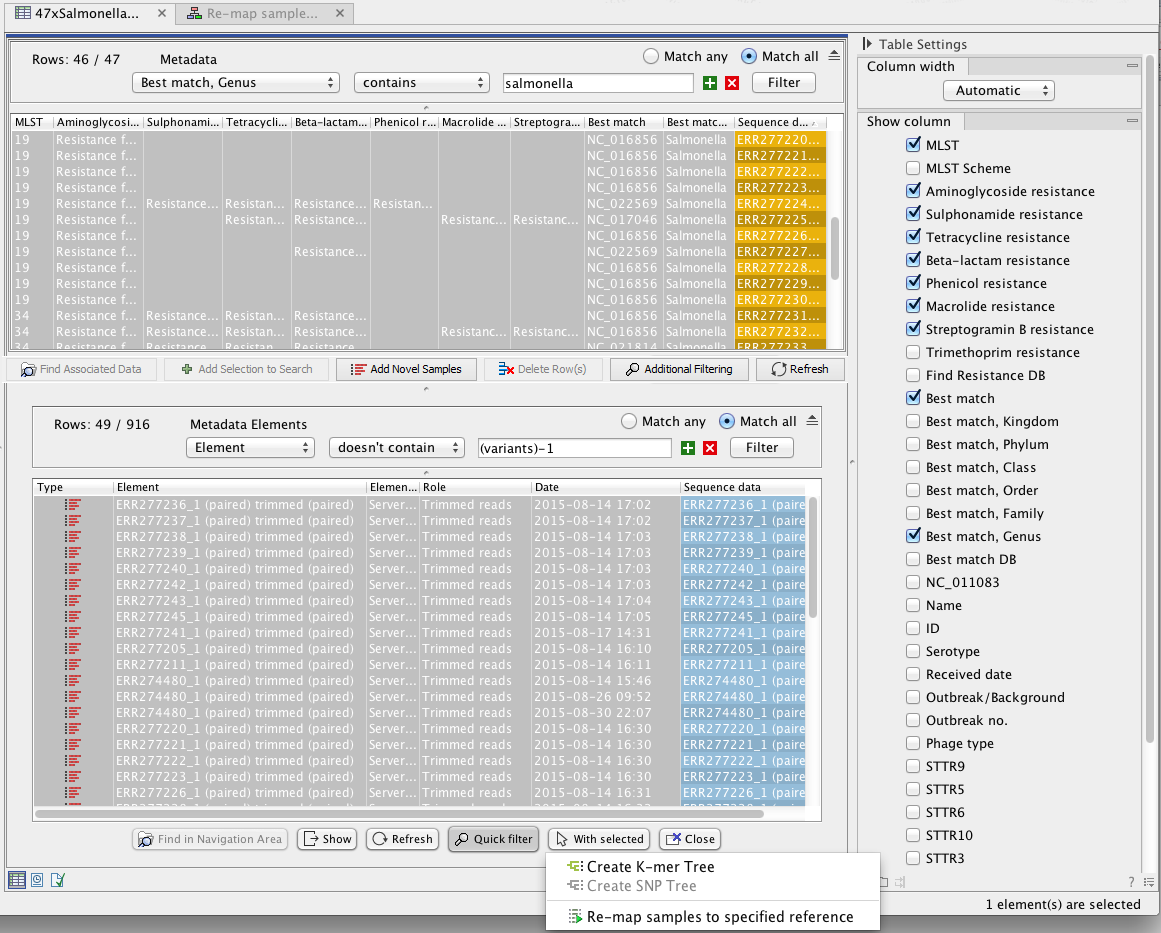From samples best matches to a common reference for all
If several best matches are found across the samples, you probably want to find a common reference sequence to all (or a subset of) the samples. This can be done directly from your Metadata Result Table, by selecting the samples of interest and creating a K-mer Tree based on these samples (see figure 8.5).

Figure 8.5: Once samples are selected in the top window, it is easy to find the associated Metadata Element files, Quick Filter towards generation of K-mer tree and finally initiate creation of K-mer tree to be used for identification of common reference sequence. From the same view, it is also possible to run a customized version of the Map to Specified Reference workflow with the selected elements.
- Select in your Metadata result Table the samples to which a common best matching reference should be identified.
- Click on the Find Associated Data (
 ) button to find their associated Metadata Elements.
) button to find their associated Metadata Elements.
- Click on the Quick Filtering (
 ) button and select the option Filter for K-mer Tree to find Metadata Elements with the Role = Trimmed Reads.
) button and select the option Filter for K-mer Tree to find Metadata Elements with the Role = Trimmed Reads.
- Select the relevant Metadata Element files.
- Click on the With selected (
 ) button.
) button.
- Select the Create K-mer Tree action.
Once you have selected the Create K-mer Tree action, you can follow the wizard as described in the section called Create K-mer Tree. This section will also explain how to understand the tree and continue with subsequent analyses. In short, the common reference is chosen as the genome sharing the closest common ancestor with the clade of isolates under study in the k-mer tree.
